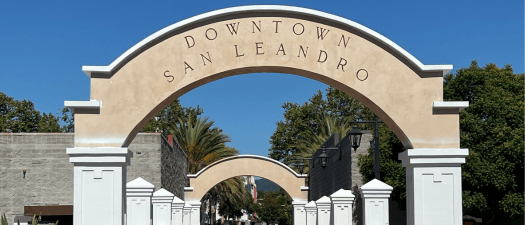San Leandro’s Shift Toward Extreme Rent Control Could Devastate Property Values
 by Chris Tipton
by Chris Tipton
San Leandro’s City Council is taking a sharp turn. What began as a moderate rent stabilization proposal from city staff, which had a 5% annual increase cap (a significant 50% reduction from the state’s 10%), capital improvement pass-throughs, and exemptions for small “mom & pop” owners, has quickly evolved into one of the most extreme rent control measures in the country. If adopted, it could significantly reduce home values, discourage investment, and stall new housing construction across the city.
Earlier this year, San Leandro’s housing staff presented a measured rent stabilization program to gather community feedback. The goal was to find balance: protect renters while allowing rental housing providers to maintain and reinvest in their properties.
Now, with the City Council weighing in, the proposal has shifted toward an aggressive rent control model that could cap rents far below inflation and impose complex new regulations on property owners. The change has sparked deep concern among rental housing providers, homeowners, and local real estate professionals who warn of serious economic consequences. The majority of the council a pushing for a 3% annual cap or 65% of CPI, whichever is lower. At that rate, the most an owner could increase the rent for this year is 0.8%. They have also cut out the ability of owners to pass through any capital improvements, and got rid of any exemptions for small rental owners. This is unsustainable, unless the goal is to kill property values and create slums over 5-10 years.
History shows that strict rent control harms local housing markets and depresses property values:
-
Cambridge, MA: Rent-controlled properties were valued 45–50% lower than non-controlled units. When rent control was repealed, citywide property values rose by $2 billion.
-
St. Paul, MN: After adopting rent control in 2022, average property values fell 5%, and new housing construction nearly came to a halt.
-
New York City: Universal rent control has long contributed to falling multifamily values, persistent housing shortage, and thousands of uninhabitable units pulled from the market because owners cannot afford to update them.
These cities show what San Leandro risks: lower home values, fewer rental options, and a slow deterioration of the existing housing stock.
How Does Rent Control Hurt Property Values?
1. Reduced Income Potential: Capped rents limit the income that rental housing providers can earn, lowering the appraised value of their properties.
2. Neighborhood Decline: When rent-controlled buildings can’t generate enough revenue for maintenance and improvements, overall neighborhood desirability drops, pulling down nearby home values too.
3. Construction Slowdown: Developers avoid rent-controlled cities, leading to less new housing and stagnating growth.
4. Conversions and Withdrawals: Owners often respond by converting rentals into condos or removing units from the market, further reducing available housing.
How Rent Control Hurts Renters
1. Reduces Housing Supply: Rent control discourages new construction and often pushes small rental housing providers to sell or convert their units. With fewer rentals available, renters have fewer choices. Competition for an already low amount of units drives up prices even higher.
2. Decreases Housing Quality: When rent increases are capped below inflation, owners struggle to cover maintenance, repairs, and capital improvements. Over time, buildings deteriorate, leading to lower-quality housing and unsafe living conditions for renters.
3. Locks Renters in Place: Rent control discourages mobility. Long-term renters stay put to keep their low rents, even when their housing no longer meets their needs. Over time, this blocks opportunities for new renters and families who need housing.
4, Creates Inequities Among Renters: Without means testing, rent control often benefits higher-income renters who can secure controlled units, while lower-income renters are left out. Those without existing rent-controlled apartments face higher rents and limited availability.
5. Reduces Neighborhood Investment: Rent control discourages upkeep and reinvestment, leading to neighborhood decline. Deteriorating housing stock and declining property values ultimately harm the broader community, including renters who want safe, well-maintained homes.
San Leandro’s Housing Future Is at Risk
Extreme rent control doesn’t just hurt rental housing providers, it hurts renters and negatively impacts the entire community.
Lower property values mean:
-
Reduced equity for homeowners.
-
Declining tax revenues for schools and city services.
-
A chilling effect on reinvestment in older buildings.
For a city with an aging housing stock and a growing population, San Leandro can’t afford policies that discourage maintenance and new construction.
Fair and balanced policy can protect renters while preserving housing quality and property values.
That means:
-
Modest, predictable rent increases tied to competition, inflation, and operating costs.
-
Mediation and education programs to prevent disputes, avoid costly eviction processes, and keep people housed.
-
Incentives for maintenance and new development.
By following this balanced path, San Leandro can keep housing affordable, safe, and sustainable without destroying the value of local homes.
The East Bay Rental Housing Association urges San Leandro rental housing providers, homeowners, and community members to stay engaged and speak out as the City Council debates this proposal. The Next Meeting is Monday, November 10th, at 7:00pm.
The data is clear: extreme rent control hurts everyone.
Now is the time to support fair, fact-based housing policy that preserves affordability and property values.
